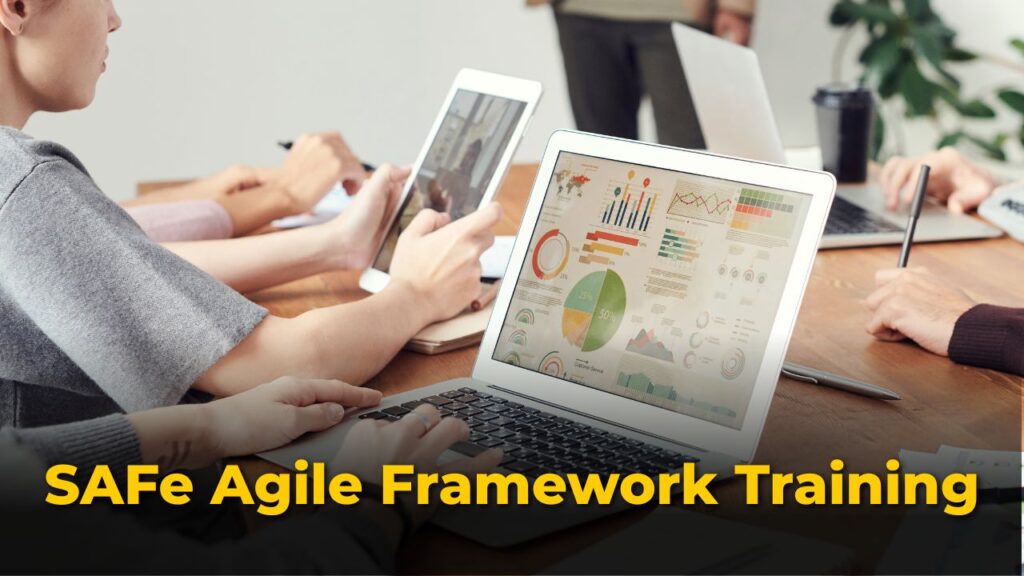Table of Contents
Key Factors Need To Know About: SAFe Agile Framework Training
Agile approaches have seen a notable uptick in the business sector as companies realize they need frameworks that can manage complexity without sacrificing speed or quality. Scaled Agile Framework is the one approach among these that is a full solution and integrates modern agile practices with more traditional project management. The topic of SAFe Agile Framework Training becomes essential when one is interested in advancing career goals and when a company aims to improve delivery capacities. The course is a strategy of professional development that will probably cause an extreme shift in how individuals and teams perform under the current competitive environment, so it is possible to consider the course more than that of a mere certification chance.
1. Prerequisites And Preparation Requirements
It is essential to perform a comprehensive assessment of previous knowledge and skills before starting to take a course of SAFe Agile Framework to maximize the training outcomes and their direct application in reality. Most of the successful candidates possess a general knowledge of agile practices, project management concepts, and team communication dynamics, but there are formal prerequisites depending on the track of the certification pursued. Also, the learning process is greatly improved by having a fundamental grasp of organizational structures, experience working in team contexts, and familiarity with popular business vocabulary.
2. Investment Analysis And Value Proposition
Long-term career growth and corporate value creation are included in the financial investment in SAFe Agile Framework training, which goes beyond the immediate certification fees. Course fees, test fees, study materials, and perhaps travel or lodging costs for in-person sessions are all examples of training expenditures. Increased earning potential, however, makes the return on investment clear; credentialed individuals frequently command better pay and have access to premium job prospects in the expanding agile economy. Better project delivery rates, less waste, better teamwork, and quicker product and service time-to-market are all advantageous to organizations. The cost of training also allows access to community-based networks, current and material and resources to facilitate life-long learning.
3. Curriculum Structure And Learning Outcomes
The SAFe Agile Framework training curriculum is carefully designed to balance some theoretical understanding with practical implementation to ensure that the trainees not only get the conceptual knowledge but also acquire some transferable skills. The curriculum usually includes the fundamentals of the SAFe ideas, the organizational-level alignment, program execution, and continuous improvement practices combined in a balanced program of lectures, workshops, case studies, and real assignments. In joint activities portraying real implementations challenges, participants explore themes such as value stream mapping, program increment planning, agile release trains, and portfolio management. Among the learning outcomes, there are supporting enter-scale agile transformation, effectively managing cross-functional teams, and implementing the perspective of lean-agile to an enterprise level, as well as aiding the process of continuous improvement that is key towards achieving a measurable benefit to the business.
4. Career Impact And Professional Growth
SAFe Agile Framework training is a huge career booster that helps professionals become acknowledged resources in firms undergoing digitalization and adjusting to agile programs. The certified individuals have the ability to speed their career advancement in most cases and may take on leadership positions with attractive remunerations like Product Owner, Scrum Master, Release Train Engineer, and Agile Coach. The program equips leadership qualities, strategic planning, and critical thinking abilities that are not bound by industry boundaries, thus, making the certified people to be employable in various industries, including manufacturing, technology, finance, and healthcare. Furthermore, SAFe proficiency offers access to thought leadership roles in the agile community, lecture engagements, and consultancy possibilities. Beyond personal development, professional growth includes improved team-mentoring skills, corporate strategy impact, and cultural reform activities.
5. Implementation Challenges And Success Strategies
To effectively implement the SAFe ideas to a real situation there is a need to understand the common issues and develop strategies to overcome obstacles that may emerge in the transformation efforts in organizations. The common barriers of allowing change include resistance to change, absence of support of the leadership structure, absence of training on all levels of the organization, as well as coordination of multiple teams towards common goals. In cases where traditional argumentative systems can conflict with the principles of SAFe, which are cooperation and the distribution of decision-making authority, cultural differences often create the most difficulties. Securing senior sponsorship, offering thorough training at all organizational levels, having open lines of communication, and developing feedback systems that aid in ongoing improvement initiatives are all examples of successful implementation tactics.
Conclusion
The SAFe Training in Delhi is a wise investment in career advancement that pays off handsomely for both people and businesses. Professionals may make well-informed judgments regarding their SAFe journey by comprehending prerequisites, assessing investment worth, investigating curriculum depth, identifying career effect, and getting ready for implementation problems. In today’s dynamic corporate climate, the framework’s all-encompassing approach to scaling agile processes offers the skills and information required to propel significant organizational transformation while furthering individual career goals.




